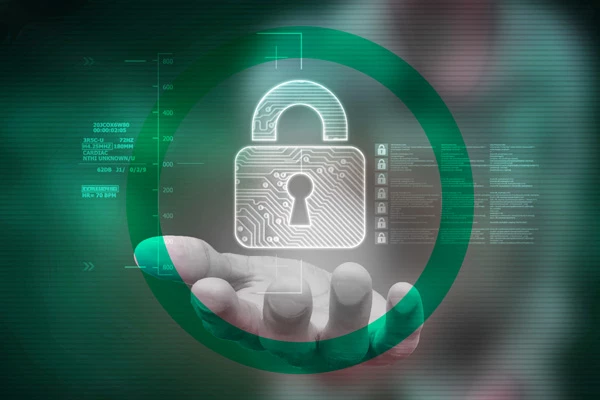
The world of digital identity is evolving at an unprecedented pace. As we move further into the digital age, the significance of secure and reliable digital identities cannot be overstated. The year 2024 promises to bring a host of innovations and trends in the realm of digital identity. From advanced biometrics to artificial intelligence and machine learning, the landscape is continuously transforming to meet the needs of businesses, individuals, and government agencies.
Digital identity trends are continually evolving to address the ever-growing concerns related to identity fraud, security measures, and user experience. With the rise of digital ID verification software, decentralized identity systems, and the expansion of identity and access management trends, the digital identity landscape is undergoing a significant transformation. In the near few years, we can expect to see a host of developments in top identity trends that will redefine the way we establish, verify, and protect our digital identities.
The role of biometric technology in identity verification trends is poised to become even more prominent. While fingerprint and facial recognition technologies have already made their mark, the trend now leans towards more sophisticated and secure forms of biometric verification. Let’s delve deeper into these emerging trends and what to watch out for:
Artificial Intelligence and Machine Learning
The integration of artificial intelligence (AI) and machine learning (ML) is revolutionizing the landscape of identity verification. These digital identity trends empower systems to discern anomalies and detect fraudulent attempts by scrutinizing patterns and behaviors. Here’s how they work their magic:
Liveness checks are set to become an integral part of biometric verification in 2024. These checks add an extra layer of security by ensuring that the person undergoing verification is genuinely present, preventing the use of static images or pre-recorded videos. Here’s how liveness checks enhance security:
Age verification is an emerging trend within biometric technology ID trends and holds particular significance in sectors like online gaming where age restrictions are in place. Here’s how biometrics are used to verify an individual’s age:
The ubiquity of smartphones in digital identity trends has made mobile identity verification an incredibly relevant trend for 2024. Mobile ID trends leverage the hardware and software features of smartphones, making it a versatile and user-friendly method for confirming one’s identity. The built-in cameras, microphones, and sensors of these devices serve as powerful tools for capturing biometric data and other identity-related information. These devices offer a convenient platform for identity verification, and their capabilities are constantly expanding:
This trend holds particular relevance for industries like banking, where customers expect a frictionless and user-friendly verification process. By harnessing the power of mobile devices, these industries can provide a convenient and secure way for users to establish and confirm their digital identities.
In the ever-evolving world of identity verification, these emerging trends in advanced biometric verification are set to redefine the standards of security and user experience in 2024. As biometric technology continues to advance, individuals, businesses, and regulatory bodies should remain vigilant and adapt to these transformative developments to ensure the safety and reliability of digital identities.
The identity verification trends market is experiencing rapid growth. With the increase in digital transactions and the need for secure access to online services, businesses are investing in advanced identity verification solutions. Start-ups and established players in the identity verification industry are competing to provide more robust and user-friendly options.
The market growth is driven by a combination of factors, including the need for enhanced security, regulatory requirements, and the desire to improve the user experience. As the market expands, we can expect to see more innovative solutions and technologies emerging to the top identity trends.
Digital hygiene refers to the practices and measures individuals and organizations take to maintain clean, secure, and healthy digital identities. In 2024, it’s one of the digital identity trends that will be an increased focus on digital hygiene as the awareness of identity theft and online threats grows.
Individuals will be encouraged to take measures such as regular password updates, two-factor authentication, and privacy settings management. Organizations will also play a significant role in educating their customers and employees about digital hygiene and implementing security measures to protect sensitive data.
The digital identity landscape is evolving at a rapid pace, driven by the need for secure, convenient, and user-friendly identity verification solutions. In 2024, with identity proofing and verification trends, we can expect to see advanced biometric verification methods, the integration of artificial intelligence and machine learning, liveness checks, and increased focus on digital hygiene. The growth of the identity verification trends market and the expanding use of mobile identity verification will also be central to the evolving trends.
As we navigate the complexities of digital identity in an era of increasing online interactions, it’s crucial for individuals, organizations, and regulatory bodies to stay informed and adapt to these emerging trends. The future of digital identity promises greater security, convenience, and peace of mind in an increasingly digital world.
Copyright © 2023 California Business Journal. All Rights Reserved.
California, known for its diverse economy and thriving tech industry, is a hotbed for innovation.…
As a violinist, I can't stress enough how crucial a top-notch case is in the…
Imagine a life where limitations do not exist—a life where you relentlessly pursue your dreams…
Asbestos exposure has left a long legacy of health issues in Australia, particularly mesothelioma and…
Did you know maintenance and financing, fuel management, driver management, vehicle monitoring and diagnostics, and…
It can be difficult to meet a matching spouse in this fast-paced environment. Online dating…